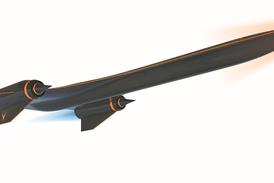"This is not just the largest aircraft on the market and not just the successor to the [Boeing] 747," he says. "It is an aircraft with innovative design which is there to improve performance and efficiency."
From the primary structures to the interior, it is an aircraft aimed at setting new standards in the civil market, he adds.
Advanced materials, such as Glare and carbon fibre reinforced plastic (CFRP), account for 25% of the airframe, offering a 15t relative improvement over traditional designs. The aft fuselage section, including the aft pressure bulkhead, vertical and horizontal stabilizers are made of CFRP.
While the flightdeck would be familiar to any pilot who has flown an Airbus type, improvements have been made to make it "the most modern in the industry", says Champion. "We always want to improve safety, so the changes you see on the A380 flightdeck represent evolution."
The main displays have been deepened from the square format to enable them to show additional information.
Critical
The sheer scale of the passenger cabins offers airline customers a critical battleground in their fight to differentiate themselves and win customers. So Airbus is offering the airlines a huge range of customisation possibilities.
"Imagine this aircraft as if you were building your house," says Champion. "You know the outer shape of it but inside you are free to customise it.
"A lot has been done to help airlines make the best use of the space available. Some airlines have requested bars. You can have social areas where passengers can gather and where the airline can offer services."
The mood lighting concept, pioneered on the A340-600, has been further developed and adapted for the A380.
The 80mx80m box was an early product of Airbus's discussions with airports that will be receiving the A380 within the next 18 months. Like the 747, movements of the A380 are likely to be concentrated at a small number of major airports. Some 80% of 747 movements are concentrated at 37 airports and they will be ready for the A380 at its entry into service. By 2010, about 60 airports will be ready for the A380, says Champion.
"Sometimes you see a report that an airport says it does not intend to be ready for the A380," he says. "That is probably a good thing because no airline would want to fly to an airport like that."
Source: Flight Daily News























